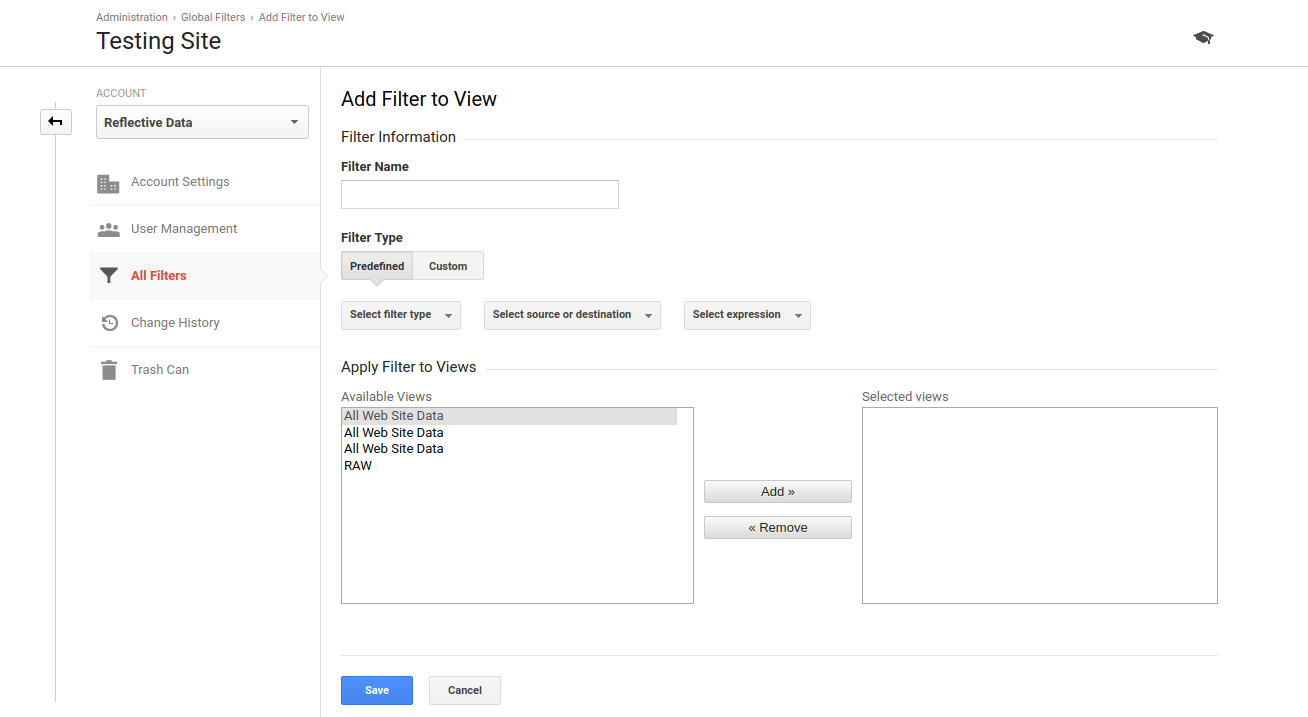The Greatest Guide To In Which Order Does Google Analytics Filter Data
Table of ContentsThe 7-Second Trick For In Which Order Does Google Analytics Filter DataWhat Does In Which Order Does Google Analytics Filter Data Do?In Which Order Does Google Analytics Filter Data - TruthsTop Guidelines Of In Which Order Does Google Analytics Filter DataAll about In Which Order Does Google Analytics Filter DataThe In Which Order Does Google Analytics Filter Data Ideas
io" is the site and also if I most likely to the homepage and also click some various other pages like signup page, it shows me in the real-time report popping-up as how we established in the filters. This page is the of site as well as you can see the sub-domain highlighted as.
Similar to the previous process, we should produce a brand-new filter as stated in the last actions - In Which Order Does Google Analytics Filter Data. in this new filter, I'm calling it as and also I'm choosing After that I'm typing the filter pattern as In this filter pattern, the pipeline icon () is included to affix any kind of other hostname that you want to consist of along with the other hostnames
Some Ideas on In Which Order Does Google Analytics Filter Data You Should Know
This is just how you can go inspect your site and comeback sight in real-time reports. The real-time report currently shows the modifications that you made when creating that filter. In this instance, the Broken page discusses about URL of the web page i. e when the Page link being duplicated the exact same, excluding lower or any kind of minute aspects.
Currently produce a brand-new filter and I call it as. Choose as well as select the filter fields.

Rumored Buzz on In Which Order Does Google Analytics Filter Data
The adhering to instructions will certainly stroll you through the process: Produce a new Google Spreadsheet (or open up an existing one). From the menu bar select: Add-ons > Obtain Attachments Find the Google Analytics Add-on from the add-ons gallery as well as pick it. From the add-on summary page, click the "+" in the top right corner to add this add-on to your spreadsheet.
Records can be developed by hand or with the aid of the add-on's record production device. To utilize the tool, choose "Add-ons" > "Google Analytics" > "Create a New Report" from the food selection bar.
This is intentional. In Which Order Does Google Analytics Filter Data. The device is indicated to help obtain you started and provide you with the details you could not know off the top of your head. The rest of the fields will certainly require to be gone into by you. If you have any type of concerns regarding what to place in each area, see the referral at the end of this page.
Little Known Questions About In Which Order Does Google Analytics Filter Data.
It can be a sheet in the spreadsheet you're presently in, or a her comment is here various spread sheet altogether (as long as you have modify access to that spreadsheet). To publish the results to a different spread sheet copy the spreadsheet link and paste it into the cell to the right of the "spreadsheet-url" criterion.
This opens a report organizing dialog where you can turn scheduling on as well as off, and also set exactly how frequently your record will run. To turn scheduling on, examine package identified "Enable records to run instantly." Once scheduling is enabled you can make use of the pick dropdown to control the time as well as regularity.
When scheduling reports, ensure there is lots of time in between when you develop the schedule and when the routine is meant to run. If it's also near the first occurrence of the scheduled time, there's a possibility those records will certainly be held off till the following occurrence. It's usually best to leave at least a one-hour buffer.
In Which Order Does Google Analytics Filter Data Can Be Fun For Everyone
Hidden parameters are innovative alternatives that are not needed for many reports and also are concealed by default. You can utilize these parameters by un-hiding the rows 14-16 in the Record Setup sheet. Name Description This is the report name. It will certainly likewise be the name of the sheet where the report information is composed.
The following expression returns the last day of the previous month: =EOMONTH(TODAY(), -1) The end date for fetching Analytics information. Requests can define an end day formatted as YYYY-MM-DD, or as a loved one date (e. g., today, the other day, or Ndays, Ago where N is a favorable integer). You can also use Sheets day features to define this worth programmatically.
Metrics can be defined in either layouts: As an example, all of the following are valid worths for the Metrics specification. ga: sessions, ga: bounces ga: sessions ga: bounces ["expression": "ga: sessions/ga: individuals", "alias": Homepage "Procedure per User", "format, Type": "FLOAT", "expression": "ga: overall, Events/ga: pageviews", "pen name": "Events per Pageview", "formatting, Type": "FLOAT"] For a lot of use instances, a checklist of statistics IDs is the simplest way to define the Metrics criterion.
The Basic Principles Of In Which Order Does Google Analytics Filter Data
The full checklist of measurements as well as metrics as well as their valid mixes is offered utilizing the Dimensions and also Metrics Explorer. Call Description A list of measurements to inquire. Dimensions can be defined in one of 2 formats: As an example, all of the adhering to are valid values for the Metrics parameter. ga: resource, ga: device, Group ga: source ga: tool, Classification i loved this ["name": "ga: source", "name": "ga: tool, Classification"] For the majority of use situations, a listing of dimension IDs is the most convenient method to define the Dimensions criterion.